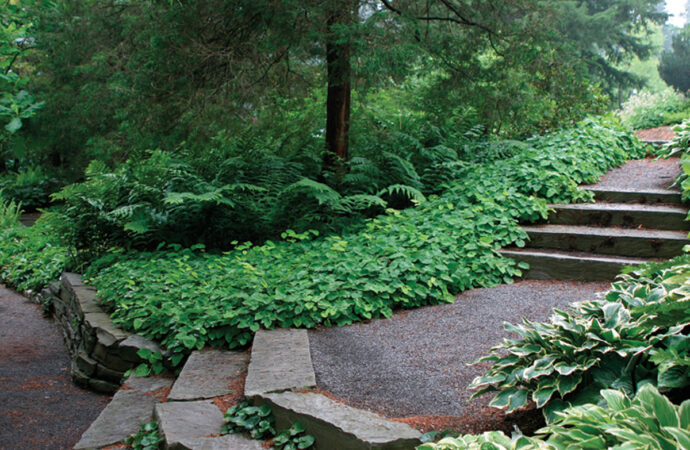Let’s say you’re working on your backyard landscape design. You may think that there aren’t any real “rules” to a good backyard landscape design. After over 30 years of designing landscapes, I can tell you that there are definitely rules to follow for good design. You can look at the blank canvas of your yard
Let’s say you’re working on your backyard landscape design. You may think that there aren’t any real “rules” to a good backyard landscape design. After over 30 years of designing landscapes, I can tell you that there are definitely rules to follow for good design. You can look at the blank canvas of your yard and get lost on how to design it so it has form, function and beauty. Look at these following “rules” of landscape garden design and look at the picture. See if you can identify any of the rules in this landscaping project. Backyard landscape design or entire property landscape design, the rules are the same.
A good garden design should not consider just one area of the property, but must view the entire property as a cohesive composition. Here are a few thoughts on the subject.
First of all, ALL landscape designs should adhere to the basic design principles of UNITY, BALANCE, INTEREST, RHYTHM AND MOVEMENT.
I’ll start with laying out the initial design, then move on to how to scale the projects proportions for the most pleasing visual impact, and then on to plant selection.
1. HAVE SPECIFIED AREAS OF USE. When we first start out in landscape design class, we use “bubble diagrams” to delineate certain areas such as ‘utility’, ‘outdoor eating’, ‘walkway’, ‘play area’, ‘open space’, etc.
- This is to ensure that things such as garbage cans don’t end up getting stored on the corner of the patio because we forgot to designate a place for them.
2. CREATE UNITY: Unity can be achieved in many ways. Unity will bring a sense of order to the design. Here are a few examples of creating unity:
- Repeat the circular lawn shape in a circular patio shape
- Transition from one design element to another element with ease
- Use similar materials throughout such as natural stone instead of mixing it up
3. BALANCE: If a design is out of balance, it just won’t feel right. A tiny border garden near the edge of an expansive lawn is an example of being out of balance. Balance can be achieved either symmetrically or asymmetrically.
- Balance one tall tree with an equal mass of shrubs
- Use the ‘golden mean rule’ for proportion. A 5’ x 8’ sized raised bed, for example always looks balanced… it’s just one of those weird rules.
4. START WITH THE ‘BONES’ AND THEN PUT ON THE ‘MEAT’: The ‘bones’ of the design is what we need to build everything else off of. In these bones, you will create the RHYTHM and MOVEMENT in the design (although other aspects such as plant choices can assist with rhythm and movement too).
- The bones will be things such as walkways, patios, retaining wall, trees, the big stuff. Lay these out so that the designated use areas flow with pleasant rhythm and movement. Different shapes can be used here too. When we move seamlessly from the front of the home, along a meandering walk on the side of the home, and come through an arbor and open up onto a patio, there is a sense of movement.
5. INTEREST: Something must always attract our eye in any given view in the landscape or it will be boring.
- Every view should have a focal point.
6. PLANT CHOICES: As far as design goes, plants should be placed in groups, and balanced with their overall mass. Always place the larger plants first, and build the smaller plant groups around the bones of the design and the larger plants. Plants are the ‘meat’ on the ‘bones’

















Leave a Comment
Your email address will not be published. Required fields are marked with *